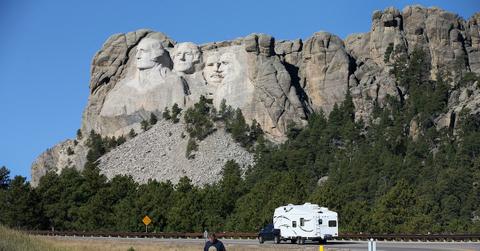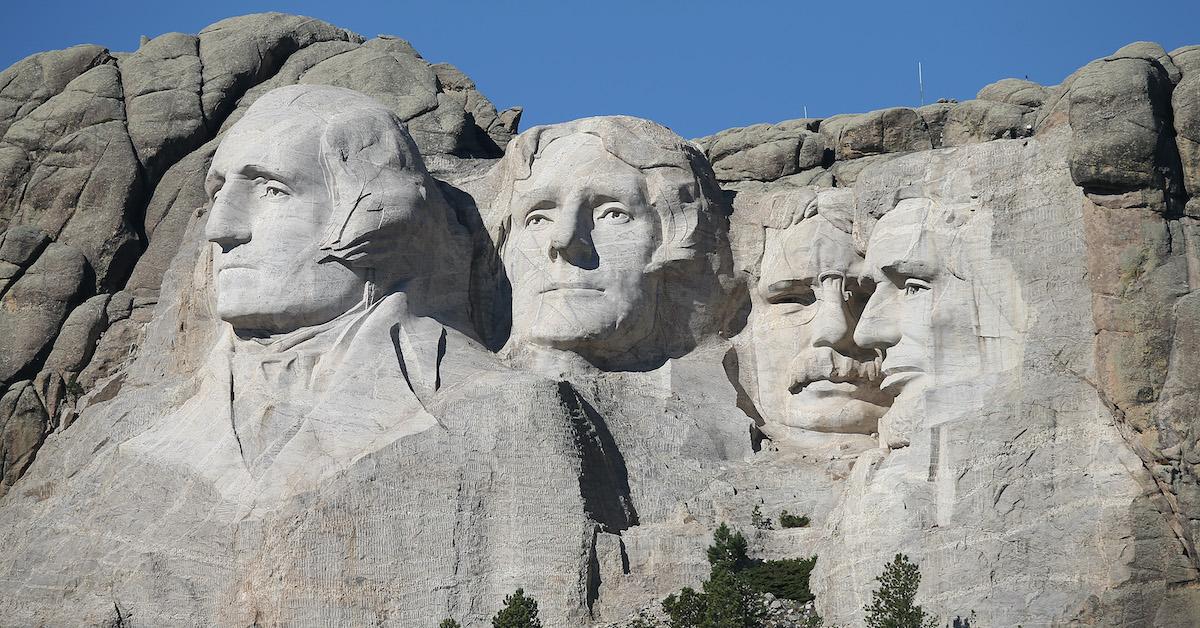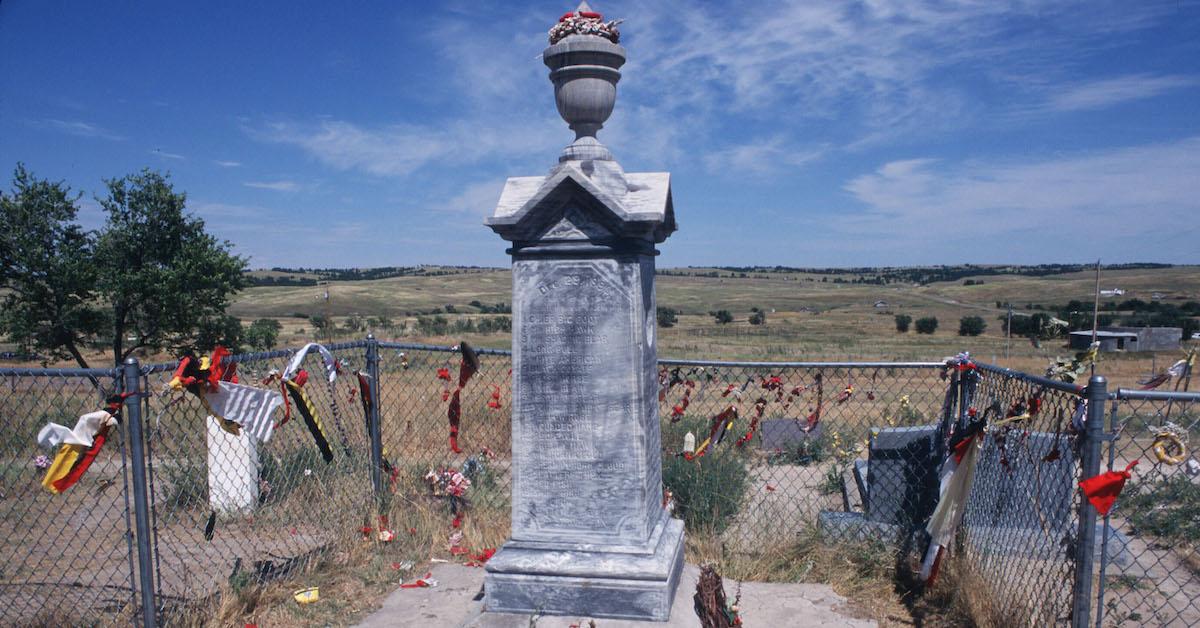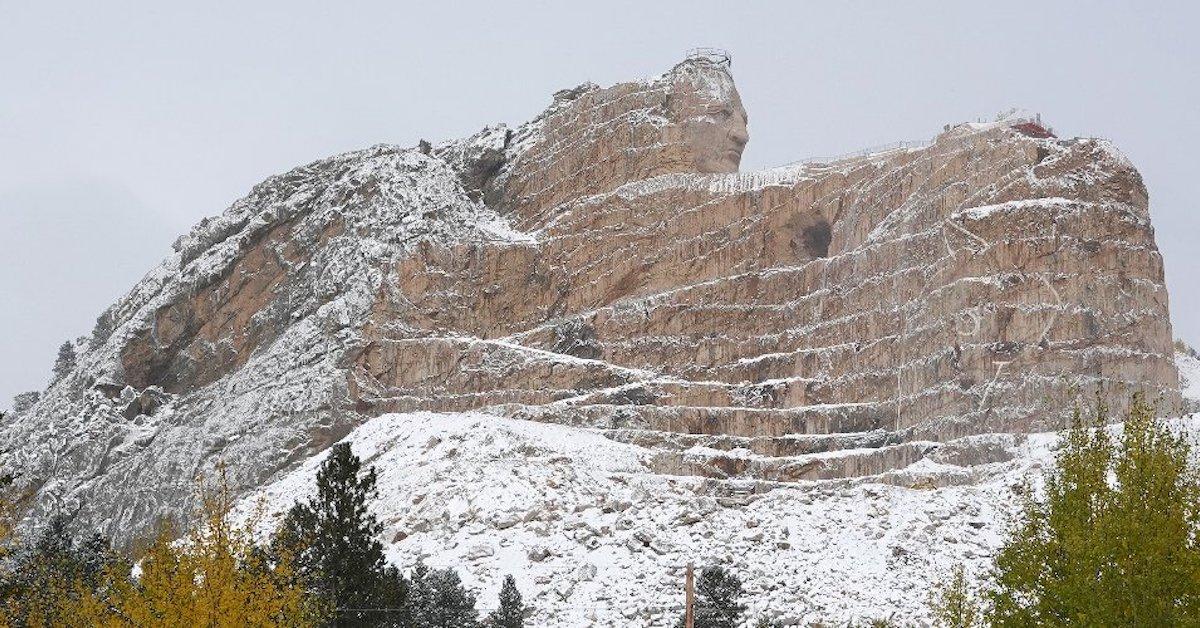Calm Down, Ben Shapiro, Mount Rushmore Is Fine
Updated June 24 2020, 12:02 p.m. ET

As activists call for the removal of monuments to slaveholders, Confederate generals, and former Klansmen, many in conservative media have been adopting a slippery slope argument that soon all monuments to historical figures are under threat.
Talk radio personality Ben Shapiro warned we are "five seconds away from blowing up Mount Rushmore," to which South Dakota governor Kristi Noem responded to a related tweet, "Not on my watch." But is there actually a movement to blow up Mount Rushmore, or is this just hyperbole from the right?
While there doesn't seem to be a real push for blowing up Mount Rushmore, the monument is problematic.
So far, there doesn't seem to be a concentrated effort to erase the faces of George Washington, Thomas Jefferson, Abraham Lincoln, and Theodore Roosevelt from the Black Hills. However, that doesn't mean the monument has not been steeped in controversy since the first dynamite blasts in 1927.

That's because the Black Hills were granted to the Lakota people 'in perpetuity" by the Treaty of Fort Laramie in 1868. However, the U.S. violated that treaty and seized the land back after the Great Sioux War of 1876 — because they found gold in them thar hills.
The Black Hills are sacred ground to the Lakota Sioux, and the Mount Rushmore carvings are seen as a defilement of the tribes' holy ground and a symbol of white settlers' many broken promises. The Wounded Knee Massacre, in which the U.S. Army slaughtered several hundred Lakota, most of them women and children, occurred nearly in the shadow of the monument.
That massacre was instigated when white soldiers observed the Lakota performing a ceremony called the Ghost Dance, a ritual to restore the land to the Lakota. The federal government had outlawed the ceremony, despite the first amendment protecting freedom of religion.

Wounded Knee Memorial
Aside from the dispute over the land and the fact that two of the four figures carved into the hills were slaveholders, there is one other historical fact that mars Mount Rushmore: that its sculptor and designer, John Gutzon de la Mothe Borglum, was a member of the Ku Klux Klan.
Who owns the Black Hills now?
Most of the Black Hills continue to belong to the U.S. government. A 1980 Supreme Court decision, United States v. Sioux Nations of Indians, determined the land had been illegally seized and the federal government was ordered to compensate the Sioux for the land.
However, the Lakota refused the $106 million settlement because they never consented to a sale in the first place and merely want their sacred land restored to them. The money has been held in an interest-bearing trust ever since, and now amounts fo over $1 billion, yet the Lakota continue to leave the money untouched, since accepting the payment would essentially communicate that the land belongs to the U.S.

Unfinished Crazy Horse Memorial
In 2012, four Sioux tribes fundraised to secure 2,000 acres in the Black Hills known as Pe'Sla, a sacred site to the Lakota, Nakota, and Dakota. The site is now officially Sioux land and has been entered into federal Indian trust. That site does not include the land where Mount Rushmore is situated.
Even so, there is a strong argument to be made that it should be up to the Sioux and nobody else what to do with Mount Rushmore, if anything. It seems unlikely the Lakota would want to blow up their sacred land any more than it already has been.
A nearby memorial to Crazy Horse, meant by some to be an answer to the Mount Rushmore problem, has been under construction for decades. However, that monument is not without controversy; descendants of the Sioux leader say he would not have wanted it and that the family was not consulted.